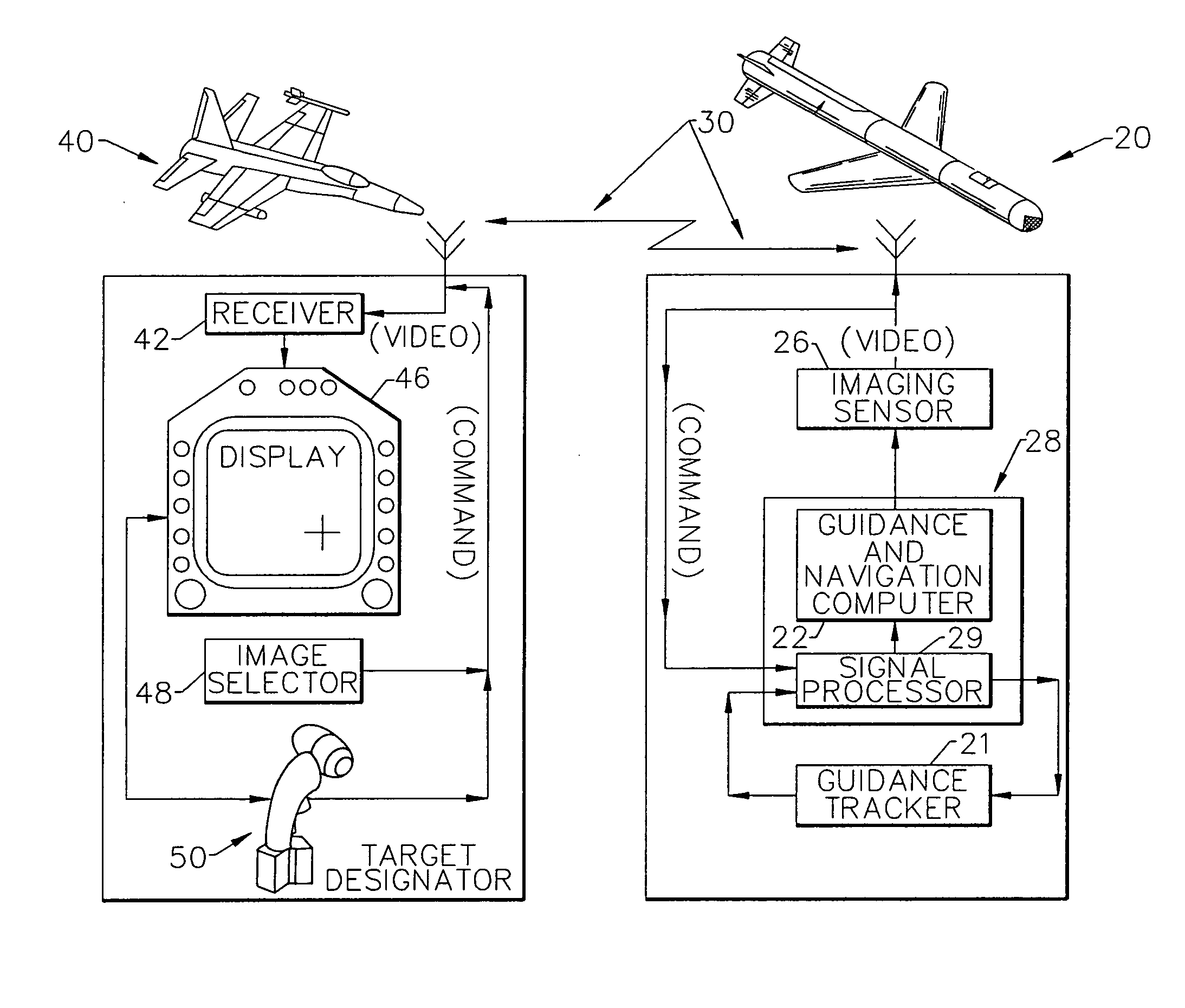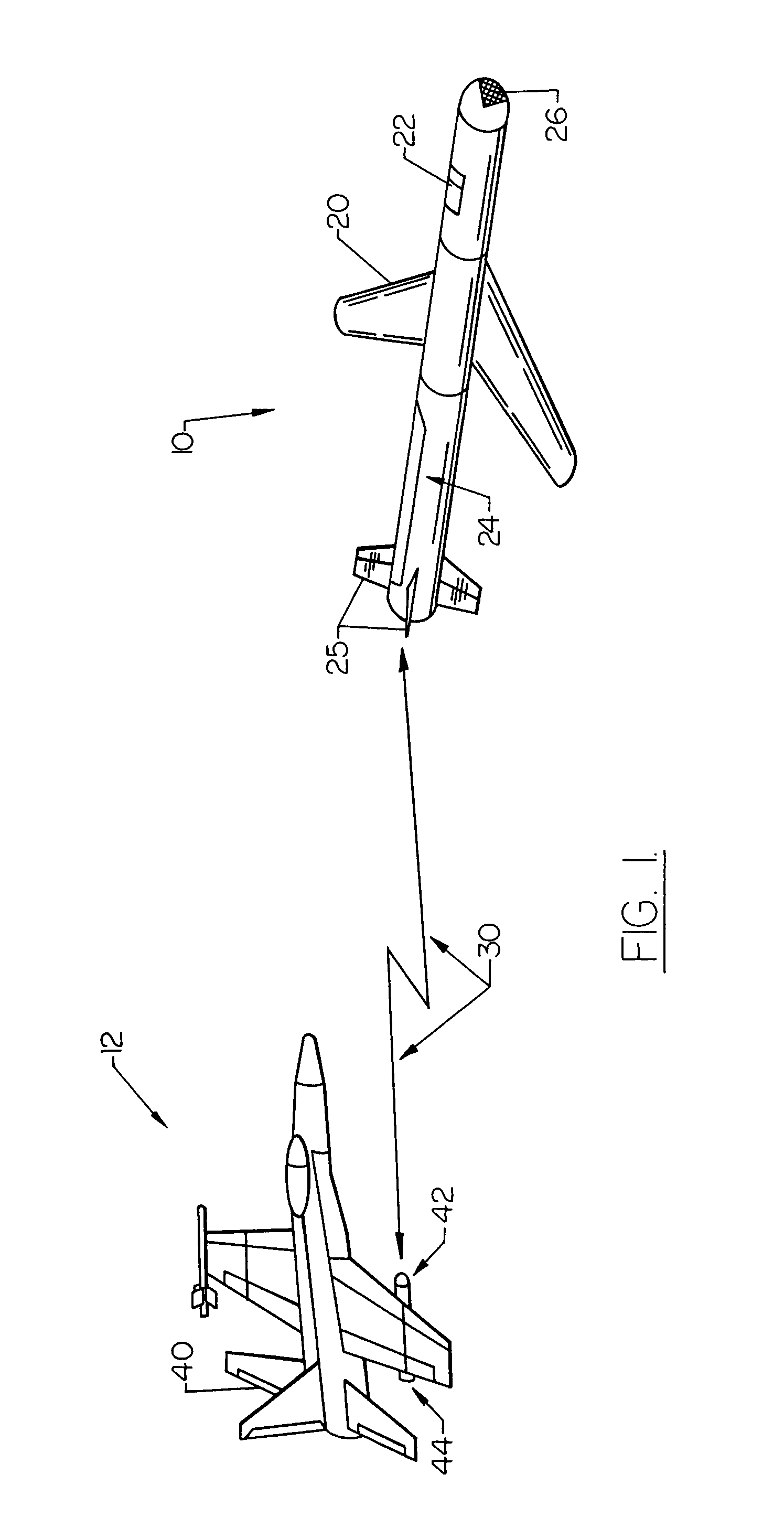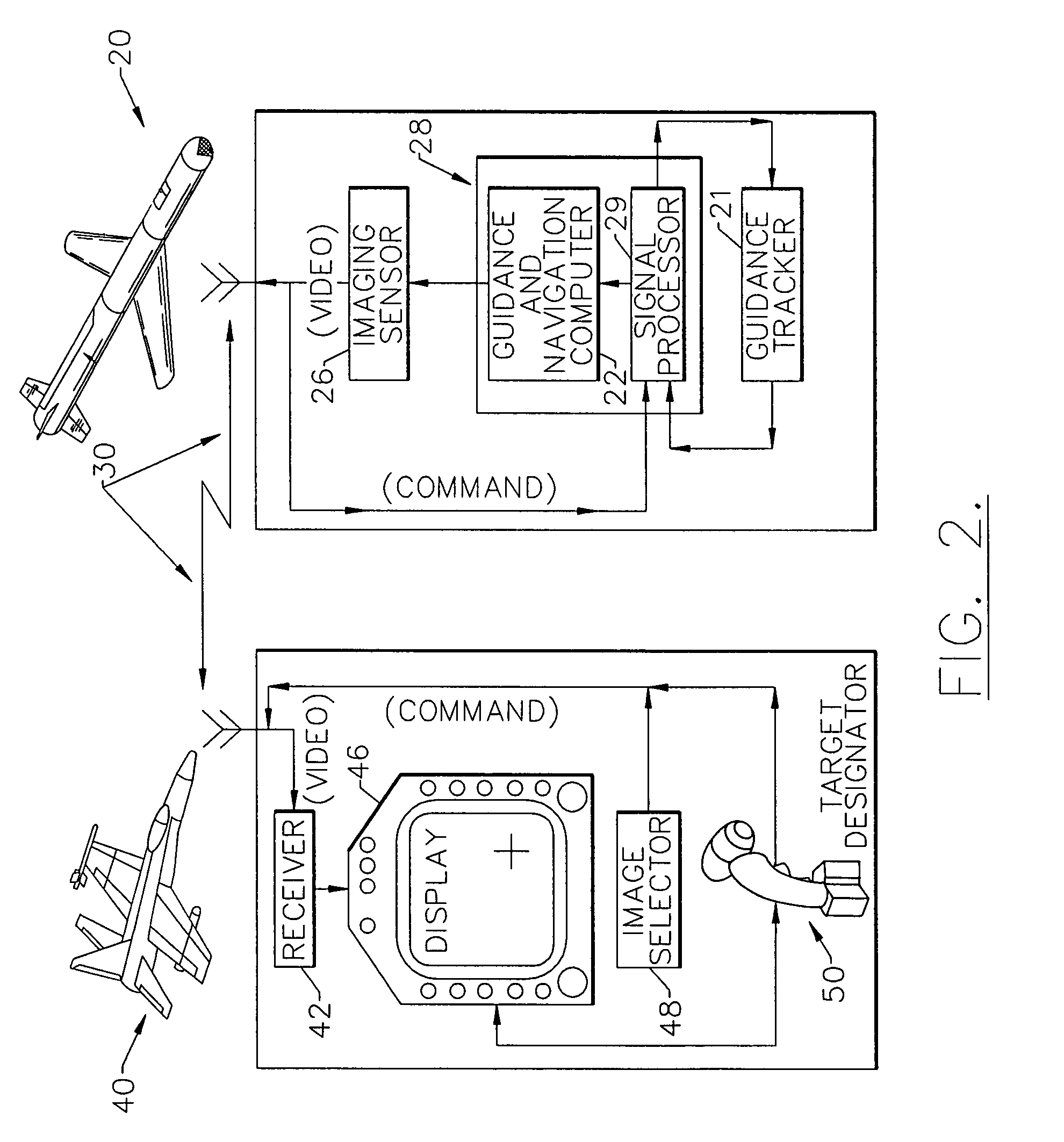System and method for designating a target for a remote aerial vehicle
- Summary
- Abstract
- Description
- Claims
- Application Information
AI Technical Summary
Benefits of technology
Problems solved by technology
Method used
Image
Examples
Embodiment Construction
[0034]Referring more particularly to the drawings, FIGS. 1-3 illustrate one embodiment of the invention in which the remote aerial vehicle 10 is an airborne missile 20 and the control center 12 is an aircraft 40. For example, the aircraft may be a McDonnell Douglas F / A-18 airplane, and the missile may be a McDonnell Douglas Standoff Land Attack Missile Expanded Response (SLAM ER). The missile 20 is typically launched from the aircraft 40 and flown to a predetermined target area (not shown). Once the missile 20 is launched, a guidance and navigation computer 22 located inside the body 24 of missile 20 guides the missile along a pre-programmed trajectory. Guidance of the missile 20 is accomplished by adjusting the control surfaces 25 in response to commands issued by the guidance and navigation computer 22.
[0035]The missile 20 comprises imaging means 26, preferably located in the nose portion of the missile. Imaging means 26, however, may be located anywhere on the missile which provi...
PUM
 Login to View More
Login to View More Abstract
Description
Claims
Application Information
 Login to View More
Login to View More - R&D
- Intellectual Property
- Life Sciences
- Materials
- Tech Scout
- Unparalleled Data Quality
- Higher Quality Content
- 60% Fewer Hallucinations
Browse by: Latest US Patents, China's latest patents, Technical Efficacy Thesaurus, Application Domain, Technology Topic, Popular Technical Reports.
© 2025 PatSnap. All rights reserved.Legal|Privacy policy|Modern Slavery Act Transparency Statement|Sitemap|About US| Contact US: help@patsnap.com



